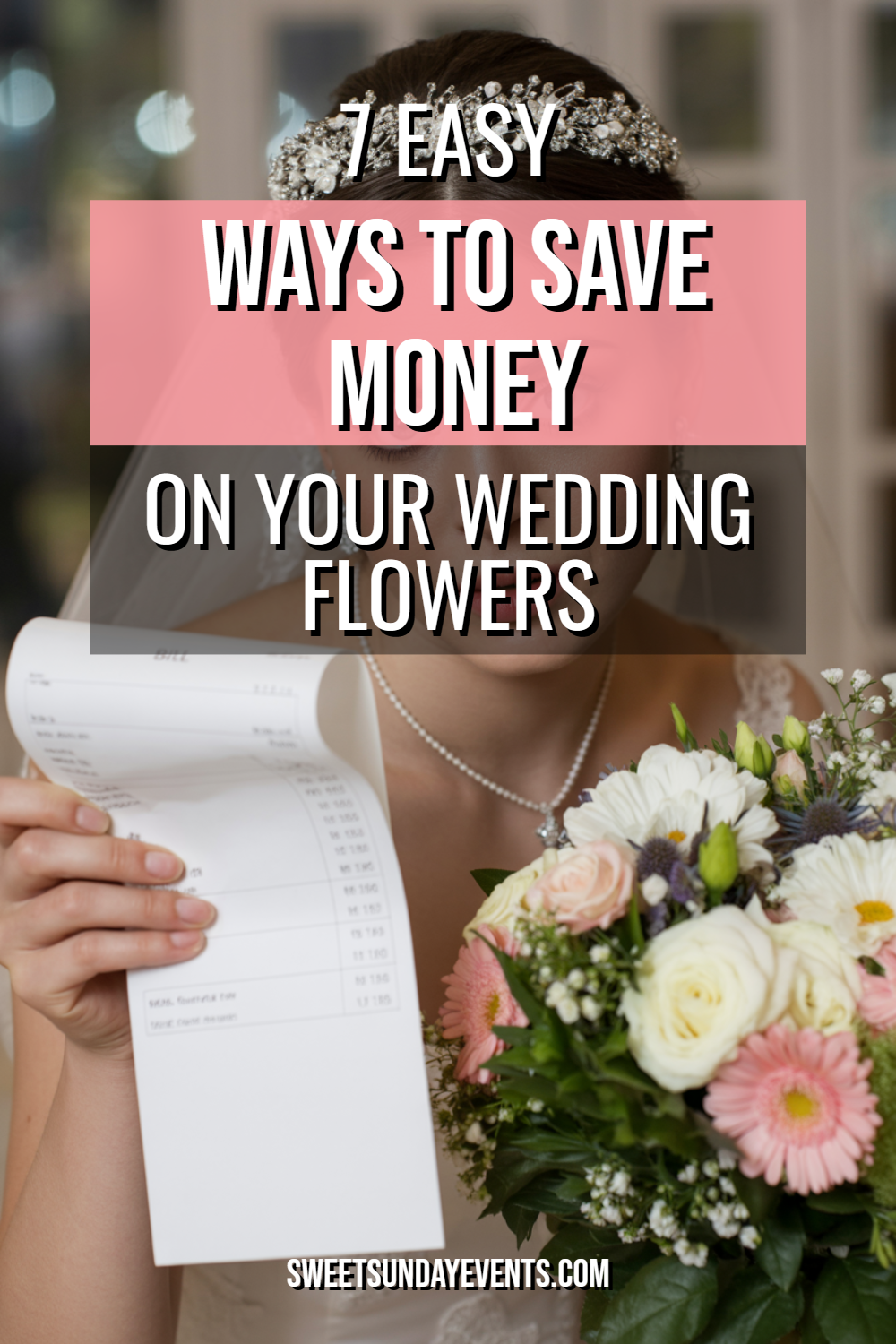Wedding flowers are gorgeous, but they can absolutely demolish your budget faster than you can say “peonies in January.”
The good news? You don’t need to choose between beautiful blooms and paying your rent next month.
1. Choose Flowers That Are Actually in Season
Here’s the thing about flowers: they have seasons, just like everything else in nature. Wanting tulips in August or sunflowers in February is like wanting snow in July – technically possible, but you’re going to pay through the nose for it.
Seasonal flowers aren’t just cheaper; they’re often more beautiful because they’re at their peak. Spring weddings shine with tulips, daffodils, and cherry blossoms. Summer brings roses, peonies, and hydrangeas in their full glory.
Fall weddings can embrace chrysanthemums, dahlias, and gorgeous foliage that’s practically free if you know where to look. Winter ceremonies work beautifully with evergreens, amaryllis, and even bare branches that create stunning architectural elements.
Your florist will love you for this choice, too. Working with seasonal flowers means they’re fresher, last longer, and require less special handling to look their best.
2. Embrace the Power of Greenery
Greenery has become the secret weapon of budget-conscious brides everywhere, and for good reason. Eucalyptus, ferns, and ivy cost a fraction of what premium flowers do, but they create incredible volume and texture.
A centerpiece that’s 70% greenery and 30% flowers looks just as lush as one that’s all blooms. The eye reads fullness and abundance, not a line-item breakdown of your floral budget.
Consider eucalyptus garlands running down long tables instead of multiple small centerpieces. Use ferns and ivy to create dramatic backdrops. These elements photograph beautifully and give you that Pinterest-worthy look without the Pinterest-level price tag.
Greenery also tends to be more forgiving. If a few leaves get crushed or wilted, it’s barely noticeable, unlike that one droopy rose that seems to photobomb every picture.
3. Repurpose Your Ceremony Arrangements
This is wedding planning 101, but you’d be amazed how many couples forget about it. Those stunning altar arrangements don’t have to live and die in the ceremony space.
Plan your timeline so there’s a gap between ceremony and reception. Designate someone (not you – you’ll be busy being married) to move the arrangements to the reception venue.
Those large arrangements can become centerpieces, and smaller ones can decorate the bar or cake table.
Aisle arrangements work beautifully as entrance decor for the reception. Even your bridal bouquet can get a second life as part of the sweetheart table setup after you’ve finished with photos.
The key is planning this from the beginning. Tell your florist you want arrangements designed to work double duty, and make sure your day-of coordinator knows the moving plan.
4. Focus Your Floral Budget on High-Impact Areas
Not every surface needs flowers, despite what wedding magazines might suggest. Strategic placement creates more visual impact than sprinkling small arrangements everywhere.
Focus on areas where people will spend the most time and take the most photos. The ceremony altar, the reception entrance, and maybe one or two statement centerpieces per table grouping.
Skip flowers in places where they’ll be ignored – like bathroom counters, gift tables, or corners where people won’t gather. Use candles, lanterns, or simple greenery in these spots instead.
Your bridal bouquet deserves investment since it’s in nearly every photo, but bridesmaids’ bouquets can be smaller or even replaced with single statement flowers. The photos will look intentional, not budget-driven.
5. Consider Alternative “Flowers”
Who says wedding flowers have to be flowers? Some of the most stunning weddings feature elements that look floral but cost much less.
Paper flowers have come a long way from craft store carnations. High-quality paper blooms can be gorgeous, especially for bouquets, and they become keepsakes afterward. Plus, no one’s allergic to paper.
Silk flowers used to be obvious and tacky, but modern artificial flowers can fool even florists. They work especially well mixed with real greenery, which masks any artificial texture.
Potted plants create beautiful centerpieces that guests can take home. Herbs like lavender, rosemary, and mint smell amazing and serve double duty if you’re having a garden-themed celebration.
Even branches, wheat, or decorative grasses can create stunning arrangements. Think outside the traditional flower box – literally.
6. Shop Smart and Compare Options
Not all florists charge the same, and not all flower sources are created equal. Do your homework before committing to the first quote you receive.
Grocery store floral departments often do wedding work at much lower prices than traditional florists. The arrangements might be simpler, but for couples prioritizing budget over elaborate designs, this can be perfect.
Wholesale flower markets let you buy directly from suppliers if you’re willing to arrange everything yourself or have crafty friends who want to help. This requires more work but can cut costs dramatically.
Some florists offer “market price” packages where you give them a budget and color palette, and they work with whatever flowers are most affordable that week.
It requires flexibility, but you might end up with blooms you never would have considered that look absolutely perfect.
7. DIY What Makes Sense, Delegate the Rest
The DIY route isn’t for everyone, but certain floral elements are surprisingly manageable for non-professionals. Simple boutonnieres, basic centerpieces, and ceremony petals are good starting points.
Boutonnieres are literally one flower, some greenery, and floral tape. Watch a few YouTube videos, practice once, and you’re golden. Even if they’re not perfect, they’ll look handmade and intentional.
Basic centerpieces in simple vases require more time than skill. Buy flowers from a wholesale market or grocery store, trim the stems, and arrange them loosely. The imperfect, just-picked look is actually very trendy.
However, know your limits. Bridal bouquets require specific techniques to stay together and look polished in photos. Complex arrangements with multiple flower types need professional expertise to look balanced.
Save the DIY energy for elements where “good enough” is actually good enough, and invest professionally in the pieces that need to be perfect.
Making Your Floral Dreams Work Within Reality
Wedding flowers don’t have to break the bank to be beautiful. The most stunning weddings often feature simple, thoughtful floral choices rather than overwhelming abundance.
Focus on creating moments of beauty rather than covering every surface with blooms. Your guests will remember the overall feeling of your celebration, not whether you had flowers on the bathroom sink.
Trust that less can truly be more when it’s done thoughtfully. A few perfect arrangements will always look better than many mediocre ones, and your photos will thank you for the restraint.


